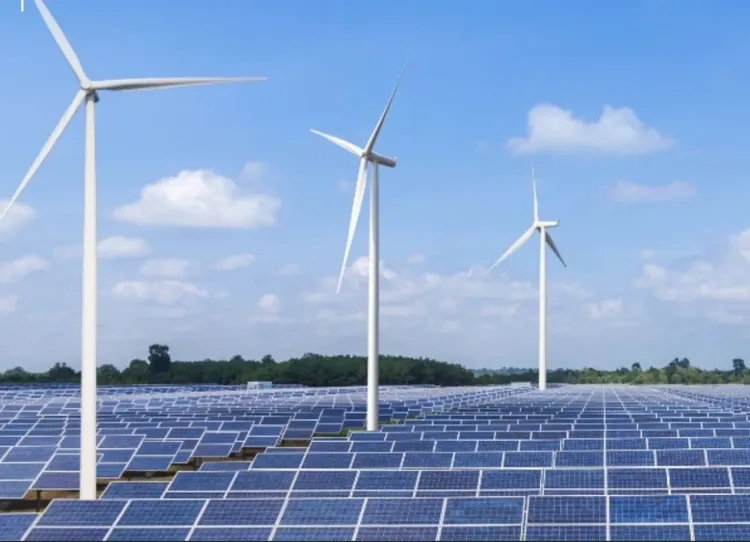How Did India Achieve 50% Clean Power Capacity?

Synopsis
Key Takeaways
- 50% clean power capacity achieved five years ahead of target.
- Major initiatives like PM-KUSUM and PM Surya Ghar are driving this transition.
- The bioenergy sector is now a crucial part of rural livelihoods.
- India is committed to climate equity and sustainable development.
- Future goals focus on doubling clean energy access.
New Delhi, July 14 (NationPress) India has reached a significant milestone in its energy transition journey by achieving 50 percent of its installed electricity capacity from non-fossil fuel sources, accomplishing this five years ahead of the target set under its Nationally Determined Contributions (NDCs) to the Paris Agreement, as announced by the Ministry of New and Renewable Energy on Monday.
This remarkable achievement highlights the country’s unwavering dedication to climate action and sustainable development, indicating that India’s shift towards clean energy is both valid and accelerating, the statement confirmed.
Union Minister of New and Renewable Energy, Pralhad Joshi, stated, “In a world looking for climate solutions, India is leading the way. Achieving 50 percent non-fossil fuel capacity five years ahead of the 2030 target is a proud moment for every Indian. Under Prime Minister Narendra Modi’s leadership, Bharat is on a path towards a self-sufficient and sustainable future.”
This accomplishment reflects the success of visionary policy design, bold implementation, and the nation’s strong commitment to equity and climate responsibility.
Flagship initiatives like PM-KUSUM, PM Surya Ghar: Muft Bijli Yojana, solar park development, and the National Wind-Solar Hybrid Policy have established a robust foundation for this transformation.
The bioenergy sector, once marginal, has now emerged as a crucial contributor to both rural livelihoods and clean energy generation, as outlined in the statement.
The Pradhan Mantri Kisan Urja Suraksha evam Utthaan Mahabhiyan (PM-KUSUM) has empowered countless farmers by providing solar-powered pumps, ensuring energy security and sustainable agriculture. This scheme has also opened doors for agrovoltaics and feeder-level solarisation.
Launched in 2024, the PM Surya Ghar scheme has initiated a rooftop revolution by making solar energy available to one crore households, promoting decentralized energy generation and turning citizens into energy owners.
Solar parks across India have enabled utility-scale renewable energy installations at unprecedented low tariffs. Wind energy, especially in states like Gujarat and Tamil Nadu, continues to play a crucial role in meeting the country’s evening peak power demand.
The bioenergy sector has made significant strides, contributing to circular economy goals and creating substantial job opportunities in rural areas.
These initiatives have not only decarbonized the power sector but have also delivered extensive co-benefits such as enhanced energy access, job creation, reduced air pollution, improved public health, and increased rural incomes. India’s clean energy revolution embodies both inclusive growth and social justice alongside emission reductions.
India’s progress gains greater significance on the global stage. Despite having one of the lowest per capita emissions worldwide, India remains among the few G20 nations on track to meet—or even surpass—their NDC commitments.
At global forums like the G20 and the Conference of Parties (COP) to the United Nations Framework Convention on Climate Change, India has consistently championed climate equity, sustainable lifestyles, and low-carbon development pathways, the statement added.
By achieving the 50 percent non-fossil milestone ahead of schedule, India further solidifies its position as a clean energy leader, showcasing that economic growth and environmental stewardship can coexist, as pointed out in the statement.
This early success opens up opportunities for even greater achievements. The next phase of India’s energy transition must prioritize quality, equity, and resilience in clean energy access.
Key focus areas include doubling per capita clean electricity consumption, particularly in rural and underserved areas, by promoting distributed renewable systems and energy-efficient appliances. There is a pressing need to develop a robust, digitally integrated electricity grid capable of managing high levels of renewable energy, demand variations, and two-way power flows, the statement concluded.










